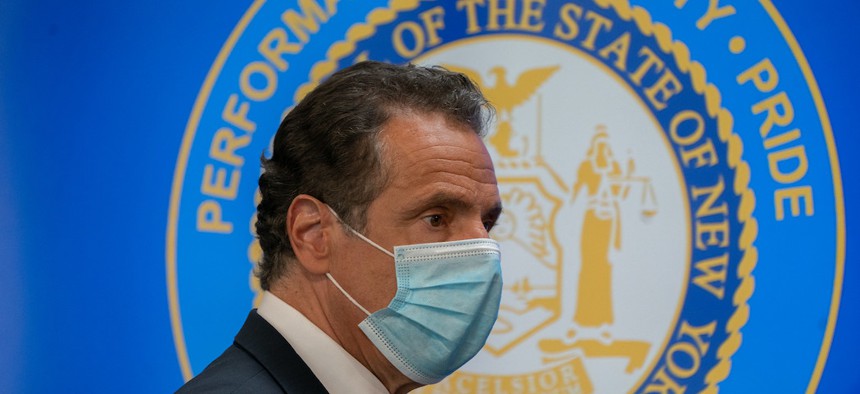Ever since the coronavirus pandemic hit the state in early March, Gov. Andrew Cuomo has asserted gubernatorial power in a way no state chief executive has in decades – from issuing a statewide stay-at-home order to the new curfew that went into effect in New York City Monday night and resumes at 8 p.m. Tuesday, after getting extended for the rest of the week.
“We have the COVID crisis that is still going on at the same time we have a new crisis, which is the civil unrest,” Cuomo said at a Tuesday press conference in Albany. “New York City has said they do not want or need the National Guard.” While he said that both the city government and the NYPD failed to “do their jobs,” he is still leaving it to them to handle the disorder.
Using troops to quell the disorder accompanying widespread protests against systemic racism is a line that the governor (whose expanded emergency powers remain in effect until April 2021) has yet to cross. But his use of emergency powers has reached a new level with the imposition, via Mayor Bill de Blasio, of the first curfew in the city since 1943.
Some elected leaders were suggesting that the time was nigh to take the state off an emergency footing, but it appears increasingly likely that that will not happen anytime soon despite progress in containing the spread of the coronavirus.
And just like another famous Queens native, Cuomo is keenly aware that with great power comes great responsibility – and plenty of criticism from the media – if he should fall short of his stated goals. “So Cuomo and de Blasio instituted a curfew and nobody listened, and the doubled NYPD presence didn't stop the looting or move to get people to go home at 11 p.m.,” journalist Ben Max tweeted Monday night.


